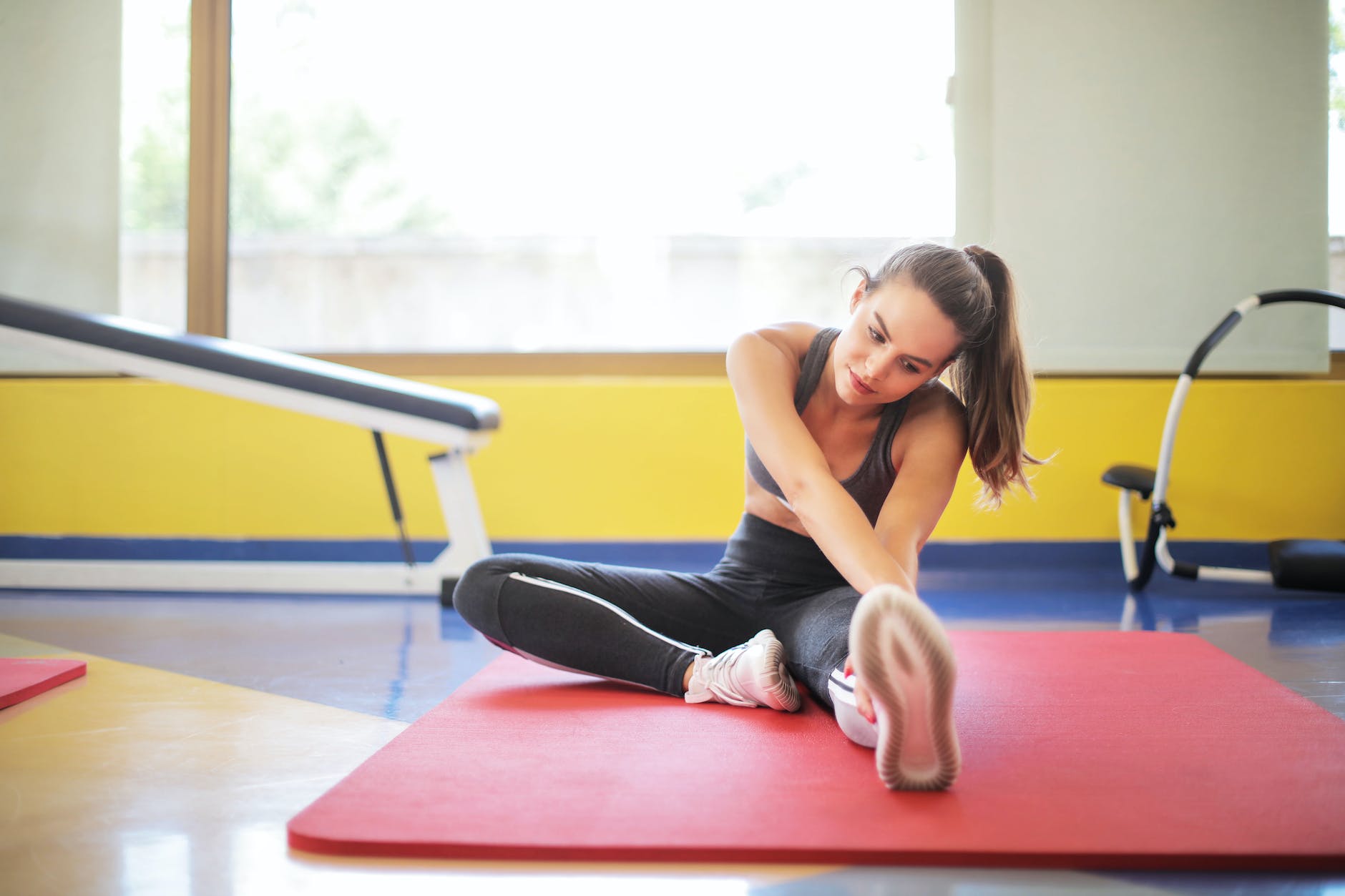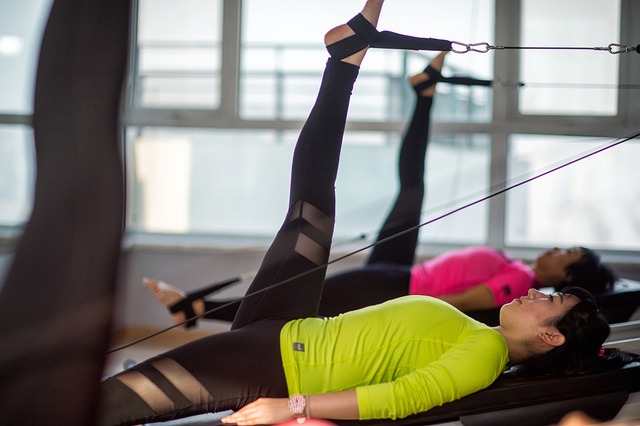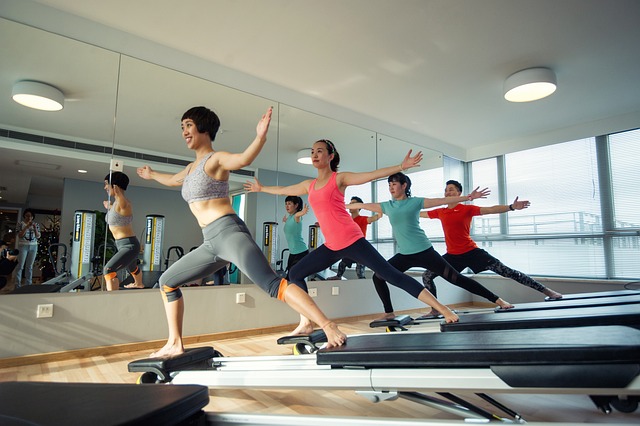There are two ways to accomplish the program’s trademarks of strengthened muscles and enhanced flexibility: mat Pilates and reformer Pilates.
Experts explain the differences between mat Pilates and reformer Pilates, so you can choose the ideal type of Pilates for you.
Pilates may be the answer if you’re searching for a low-impact workout to add to your regimen, one that will develop your core and increase your muscular endurance without ever leaving the ground.
Pilates routines, which were invented by Joseph Hubertus Pilates in the 1920s, involve particular movements to stretch, strengthen, and balance the body, along with focused breaths to stress having control over each movement. Consider it to be yoga’s slightly stronger relative.
What Exactly Is Mat Pilates?
Mat Pilates is the original Pilates, and it is most similar to what Joseph Pilates imagined more than a century ago. This pilates requires only a mat, though a ring or ball can be used if desired.
Mat Pilates lengthens, strengthens, and tones the body while enhancing flexibility and is done on the mat without the use of equipment. The emphasis is on small, controlled movements, with a significant chunk of the class focusing on strengthening your core muscles. Here’s more information on the advantages of mat Pilates.

Improves Pilates Techniques and Form
One of the primary advantages of mat Pilates is that it lays the foundation for future workouts, both Pilates and non-Pilates. Mat work is the foundation of the entire Pilates exercise system. You’ll master the principles of Pilates movements and methods, such as a neutral spine, an engaged core, and deliberate breathwork, in a mat Pilates session.
You’ll be able to adapt these Pilates fundamentals to your other workouts if you practice them on the mat (for example, remembering to retain a neutral spine during a deadlift or using a forceful exhale to power through a push-up). Plus, if you do decide to attempt a reformer Pilates class, you’ll be prepared to perform the moves safely and successfully.
Enhances Posture
Because so much of a Pilates class is devoted to core strengthening (with exercises like hollow body holds, planks, and teasers, because of these movements, it’s no surprise that a devotee of mat Pilates may find themselves standing up a little straighter.
According to one study, participants who conducted a one-hour mat Pilates practice twice a week for 12 weeks had a better core posture and upper spine.
Pilates is getting you to link to the posterior chain so you are more aware of your posture. Mat Pilates, in addition to improving your mind-body connection, exercises your deep core muscle that stabilizes your lower back and your transverse abdominal and keeps you upright. You will notice you are not slouching at your work after you practice Pilates.
Encourages adaptability
Pilates can help you achieve one of your key fitness goals: being able to touch your toes. Because Mat Pilates promotes flexibility as muscles are constantly lengthened. Participants in one study saw significant increases in hamstring flexibility after doing an hour of mat Pilates twice a week for 12 weeks.
Participants who did a one-hour Pilates workout once a week for six months could reduce their fingertip-to-floor distance. By 4.3 millimeters on average.
Educates on Breath Control
Trust that your breath will be at the forefront of your consciousness during every mat Pilates session — and not necessarily because you’ll be gasping for oxygen.
Mat Pilates, on the other hand, harnesses inhales and exhales to generate a stronger mind-body connection. Your instructor will lead you through the proper times to breathe in and out, allowing you to maximize the efficacy of your motions. For example, during an eccentric movement, you will inhale as you extend your muscles and exhale as you contract the muscles to generate as much force as possible.
Pilates breathwork has mental health benefits as well. This is because focusing on your breath has been proven to improve your mood and treat anxiety and despair. A weekly mat Pilates session could help you improve both your physical and mental well-being.
What Exactly Is Reformer Pilates?
This type of Pilates is a low-impact, full-body workout that combines regulated use of breath and movements on a reformer machine to target specific muscle areas. This is what most Pilates studio practice.
It still employs slow and controlled movements, but it also employs strategic programming that is more in line with strength training. Alternatively, your reformer Pilates class is more likely to include parts dedicated to specific muscle groups (such as your obliques or inner thighs), akin to what you’d find in a traditional strength training program.
The machines they use in the studio consist of a sliding platform, a platform at either hand and handlebars on the platforms. Or straps to facilitate motions, such as biceps curls and springs that adjust the machine’s resistance.
Some reformers also have extra loops for glute work or handles to make particular moves (such as shoulder presses or rows) more comfortable.
Provides Total-Body Strength Training
While mat Pilates provides low-intensity strength training, the reformer (and its springs) provides a more targeted, high-intensity workout. The reformer has many different types of exercises that can work your entire body.
Furthermore, the reformer’s distinctive springs create changing amounts of resistance to each and every move. While mat Pilates is largely bodyweight exercises, the option to add weight to reformer Pilates increases muscle strength and endurance. That can make more impact in training because you can withstand tension for longer periods of time.
Remember that during resistance training, your muscles experience minor muscle tears, which your body then repairs, resulting in muscle growth.
Pilates improves Balance and coordination
The Pilates reformer’s sliding carriage adds an element of instability to your routines. Your muscles must be completely engaged to move the platform steadily or retain it in the same spot.
You’ll also need to rely on your balance skills, like reverse lunges with one foot on the platform, to prevent wobbling when performing specific moves. You’ll be working on a moving machine, which will improve your balance and coordination.
Reduces the possibility of injury
Unlike high-impact workouts that need your feet to leave the floor, both mat and reformer Pilates keep both feet firmly on the ground, lowering your chance of injury.
The springs on a reformer machine, on the other hand, serve a dual purpose: they not only add resistance to simulate dumbbells or barbells, but they also restrict the platform from moving too much.
Springs can give you more support, so they can help create stability during specific exercises. For example, if you’re healing from a knee injury, you can use springs to increase knee joint stability, allowing you to target the hamstring without risking harm.
Provides a wider range of exercises
With all of the attachments and accessories on the reformer, it’s no surprise that one of the biggest advantages of reformer Pilates is the incredible range of exercises you may try. The attachments create a variety of movements, and it allows tension to be targeted in different muscle groups and creates a more rounded workout.
Mat Pilates, on the other hand, is more limited in terms of exercises and body areas that can be targeted. You can use a reformer to add an oblique mermaid crunch or an overhead triceps extension to your routine, but you can’t do those as bodyweight Pilates exercises.
The reformer’s adaptability allows you to be smarter in focusing on specific muscle areas, and the addition of resistance springs makes it simple to step up your exercises when you’re ready.
What Is the Difference Between Mat Pilates and Reformer Pilates?
Both styles of Pilates provide a low-impact approach to resistance training. However, one may be better suited to your objectives. Here’s how to choose between mat and reformer Pilates.
For Beginners, Mat Pilates, or Reformer Pilates?
There is no doubt about it: Anyone who is new to Pilates should attend multiple mat Pilates sessions to learn the basic movements and methods.
Mat Pilates sessions will teach you the fundamental Pilates movements. Including glute bridges, isometric lunges, and “the hundred,” a classic Pilates core action that combines small arm pulses and hollow body hold. When you are comfortable with your Pilates foundation on the mat, you can progress to the reformer.
Which Pilates is Better for Strength Training? Mat Pilates or Reformer Pilates?
Book a reformer Pilates session if you want a workout that closely resembles a typical, weight-bearing strength training. A reformer Pilates session can provide the resistance and progressive overload found in a structured strength-training program while also working to muscular exhaustion.
You can always challenge yourself to use a higher resistance to get more muscle stimulation. The reformer may be used to perform a variety of full-body exercises, some of which would be impossible to perform on a mat.
Which Pilates is Better for Body Awareness? Mat Pilates or Reformer Pilates?
Once again, reformer Pilates comes out on top. You have to work harder to keep your movements under control on the moving platform. However, because the mind-body link is a basic principle of all Pilates, you can still benefit from mat Pilates in terms of better proprioception (your body’s knowledge of where it is in space).
Which Pilates is Better for Injury Recovery? Mat Pilates or Reformer Pilates?
The short answer is: it depends.
Long story short: When recuperating from an injury, deciding between mat Pilates and reformer Pilates is dependent on your personal ailment and fitness levels.
Someone who commonly suffers from low back discomfort, for example, might benefit from mat Pilates. The low-impact workout increases core strength (which can help avoid low back pain) without the risk of adding resistance.
You might want to try reformer Pilates if you’re used to high-intensity workouts, and muscle pulls holding you from your regular regimen. You’ll be able to maintain (and even enhance) muscle strength while you are on the injured list. You might even be able to correct muscle imbalances so you can avoid future injuries.
In either scenario, you should consult your doctor for medical clearance before attempting a new workout regime. And you should also ask the instructor for adaptations to meet you where you are on that particular day.
To Conclude
If you are just starting Pilates, you may benefit more from mat Pilates. Strength-training enthusiasts may prefer the reformer; both styles of Pilates are beneficial to your workout program.
The Pilates method includes many different variations and modifications that make it accessible to everyone. Even if you are starting to work out or are a gym buff/bunny, Pilates is great to add to your regimen!


